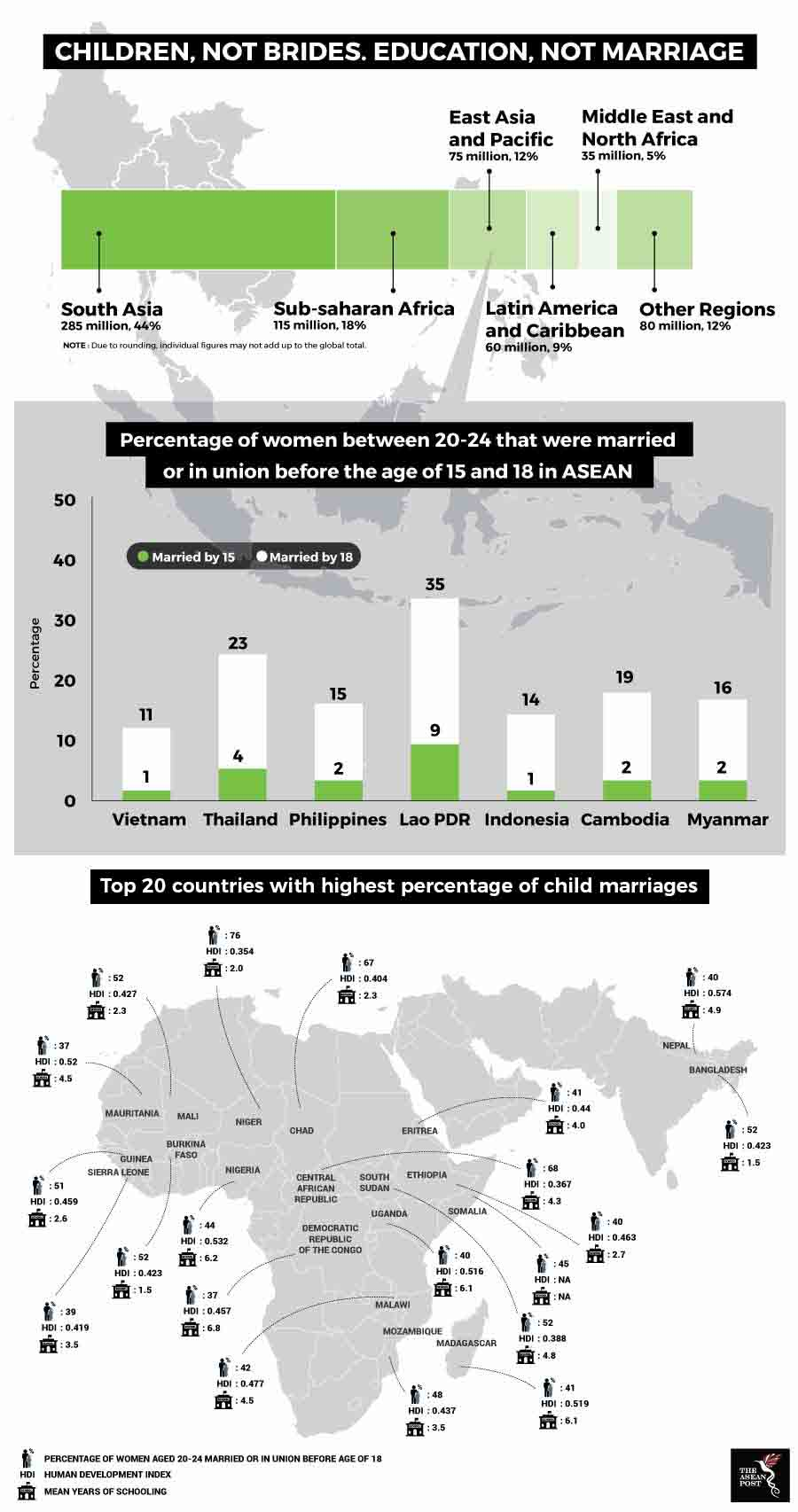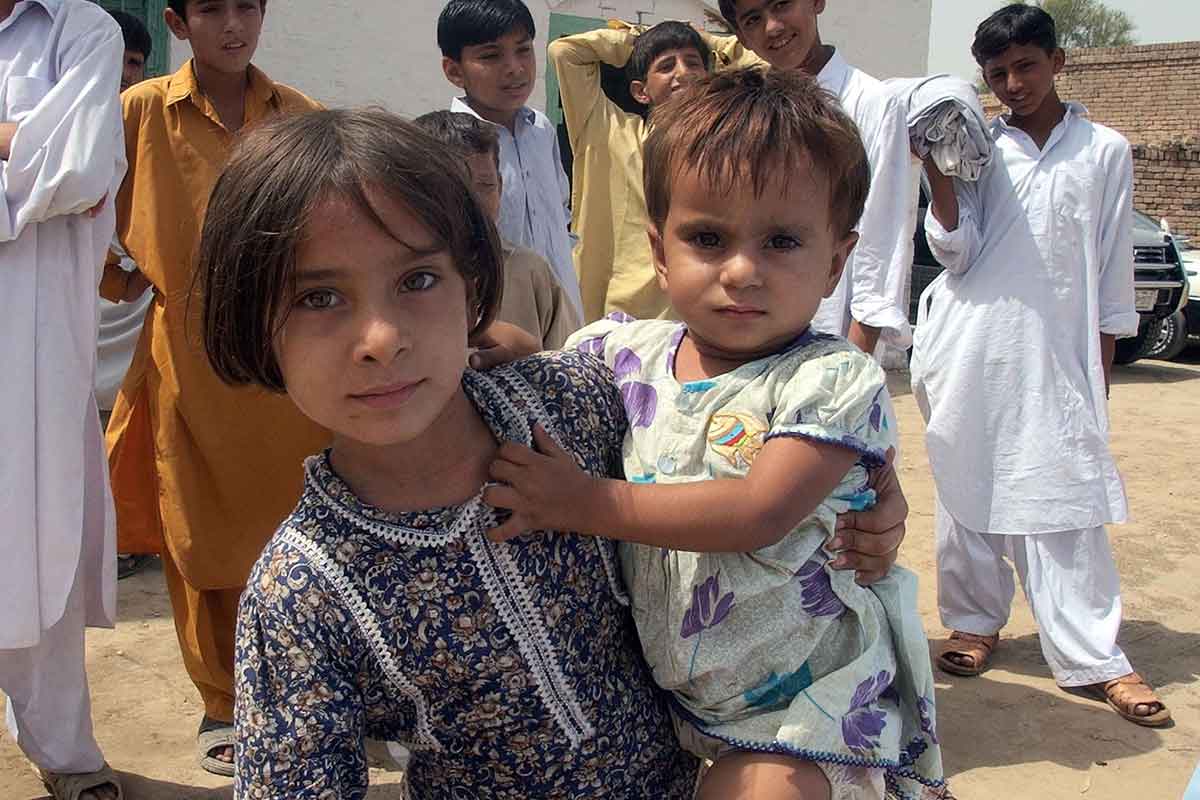Amidst recent calls to increase the marriageable age from 16 to 18, the government in Malaysia has expressed its plans to amend two laws. The announcement followed the march to Parliament involving activists, primary and secondary school students and member of the public to hand over of petition for the same objective.
Malaysia’s Deputy Prime Minister, who is also the Minister of Women, Family and Community Development, Dr Wan Azizah Wan Ismail said the amendments will include requirements for submission of a social report from the state Welfare Department, a health report from the state Health Department, and a police report.
“Information such as the background of the applicant and bride, income, social status, financial ability and education are among the elements that must be stated through the social report so the Shariah judge can make a decision which protects children involved in underage marriages,” she said.
The push to increase the age of marriage to 18 was renewed after the news of two back-to-back underage marriages went viral on social media in July and September this year. The first child marriage was between a 41-year old twice-married Malaysia man and an 11-year old Thai girl who has never been to school, and the other was between a once-married 44-year old man and a 15-year old girl. While the solemnisation of the first child marriage occurred in the southern Thailand province of Narathiwat, both couples live in the northern Malaysian state of Kelantan.
Global scourge, regional burden
A report on latest trends and future prospects of child marriages by the United Nations Children’s Fund (UNICEF) puts the number of girls and women alive today that were married before their 18th birthday at 650 million. Child marriage is defined as marriages or unions involving children under 18 years of age. The bulk of these child marriages or 44 percent occur in South Asia, followed by Sub-Saharan Africa, East Asia and Pacific, Latin America and the Caribbean, Middle East and North Africa.
Among ASEAN countries, UNICEF data shows that the highest proportion of child marriages or unions occur in Lao PDR at 35 percent, followed by Thailand at 23 percent, Cambodia at 19 percent, Myanmar at 16 percent, the Philippines at 15 percent, Indonesia at 14 percent, and Vietnam at 11 percent. Lao PDR is also ranked 24th in the order of countries with the highest prevalence of child marriages.
While the report did not present data for Malaysia, a 2018 working paper by the National University of Malaysia for UNICEF Malaysia quoted data on 15,000 girls who were married before the age of 15 as of October 2010. According to the working paper, there were 5,215 cases of married, non-Muslim female children (16 to 18 years old) from 2005 to October 2015, 6,584 cases of marriage involving Muslim children from 2011 to October 2016, and 196 married children out of 63,883 married couples in the community in 2010. However, these figures are probably inaccurate as data on child marriages suffers from under-reporting, due to unregistered or unofficial marriages, as well as customary marriages.
Lack of education and empowerment, not religion
At the very heart of the problem is poverty as well as inadequate healthcare, a lack of education, poor living standards, and a lack of empowerment. UNICEF ranks countries around the world with the highest rates of child marriages, with Niger at the top of the list with 76 percent of women aged between 20 to 24 years who were first married or in union before the age of 18. In the ranking consisting of 20 countries, 18 are African, while two are Asian.
When the 20 countries are further broken down, it was found that in terms of religion, these countries are divided right down the middle with eight being majority Christian and seven majority Muslim. Three countries have equal followers of Islam and Christianity. Madagascar has a majority of traditional belief followers while Nepal is majority Hindu. Five are war-torn countries.
A shared commonality is the fact that all of these countries reside at the bottom of the Human Development Index (HDI) rankings, representing weak achievements in life expectancy, education, and income. In these countries, the mean years of schooling range between 1.5 to 6.8 years, with a mean of 4.0 years. Life expectancy goes as low as 52.2 years.

Source: Various sources.
Human development enlarges people’s choices. The higher the human development level, the more control one has over his/her life choices. It impacts decision making in all aspects of life. Investments in access to and quality of education, healthcare and poverty eradication are the magic bullets that keep stories like that of the 11-year old girl in history books.
This article was first published by The ASEAN Post on 19 July 2018 and has been updated to reflect the latest data.
Related articles:
Women’s role in terrorism and counter-terrorism
Trafficked brides heading for China
Weaving their way out of poverty
